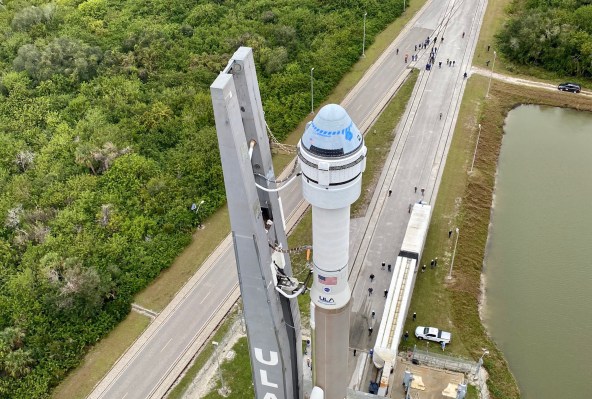
NASA and partners Boeing and the United Launch Alliance (ULA) are gearing up for a crucial milestone moment on Friday: The “Orbital Flight Test” (OFT) of the Boeing Starliner CST-100 Crew Capsule. The capsule, a spacecraft designed to carry astronauts on board from U.S. soil for the first time since the end of the Space Shuttle program, will be launched on an Atlas V rocket provided by ULA — without anyone on board this time, but in a mission that is one of the last key steps before astronauts take their first ride.
What’s happening
On Friday, pending weather and everything else cooperates, ULA’s Atlas V rocket will carry the Boeing Starliner CST-100 crew capsule to the International Space Station (ISS). This launch will be essentially a full run-through of the forthcoming Crew Flight Test (CFT), the first flight of the Boeing crewed spacecraft with actual astronauts on board.
While this is one key component before that CFT mission takes place, it’s not the only one remaining: Starliner must still undergo three remaining reliability tests for its parachute system, on top of the data gained about this crucial component of the overall launcher, before the spacecraft is certified for regular service transporting astronauts to and from the ISS in a non-testing capacity.
During the mission, the Starliner will ascend atop the Atlas V rocket to a height of 98 nautical miles, at which point it’ll separate from the rocket and continue under its own power for the remainder of the trip to orbit, where it’ll rendezvous with the ISS for docking. Astronauts on board the ISS will assist with docking using the station’s robotic arm, and then unload around 600 lbs of equipment and supplies that’s being carried aboard the crew capsule as a secondary mission, before the capsule undocks and returns to Earth.
When and where it’s going down
The launch is scheduled for Friday morning, December 20th at 6:36 AM EST (3:36 AM PST). It’ll launch from Space Launch Complex 41 (SLC-41) at Cape Canaveral Air Force Station in Florida. Weather conditions are looking 80% favorable based on current forecasts, which means that as it stands, there’s a good chance weather will be within acceptable limits for take-off.
The launch window is instantaneous, meaning that it only opens for that specific time and if anything prevents the launch from happening, there are backup dates potentially available — December 21 and 23, as well as options on either Christmas Day or a few days following. After launch, the Starliner will dock with the station on the morning of December 21, and then spend around a week at the ISS, before undocking on December 28 for its return trip. The journey back is as important as the trip to the ISS in terms of proving out the spacecraft’s proper functioning.
What happens after that
Should everything go to plan, Boeing’s Starliner CST-100 will be much closer to its ultimate goal of transporting people to space. As mentioned above, the parachute system still requires some additional testing for certification purposes, but the crewed CFT test launch should happen sometime in “early 2020,” according to Boeing, provided everything meets their strict requirements in terms of safety and other readiness standards.
On Wednesday, ULA rolled out its mobile launch platform and the Atlas V rocket to the launchpad in preparation for Friday’s mission. The teams will now conduct pre-launch preparations leading up to Friday, a process it already conducted two weeks ago in dress rehearsal mode covering everything right up to the actual ignition.
We’ll have live coverage of the launch right here on TechCrunch as it happens, and a summary of how the launch went immediately following, so check back Friday for updates.
Bagikan Berita Ini















0 Response to "NASA’s mission to once again fly astronauts from US soil readies for key milestone with Friday launch - TechCrunch"
Post a Comment